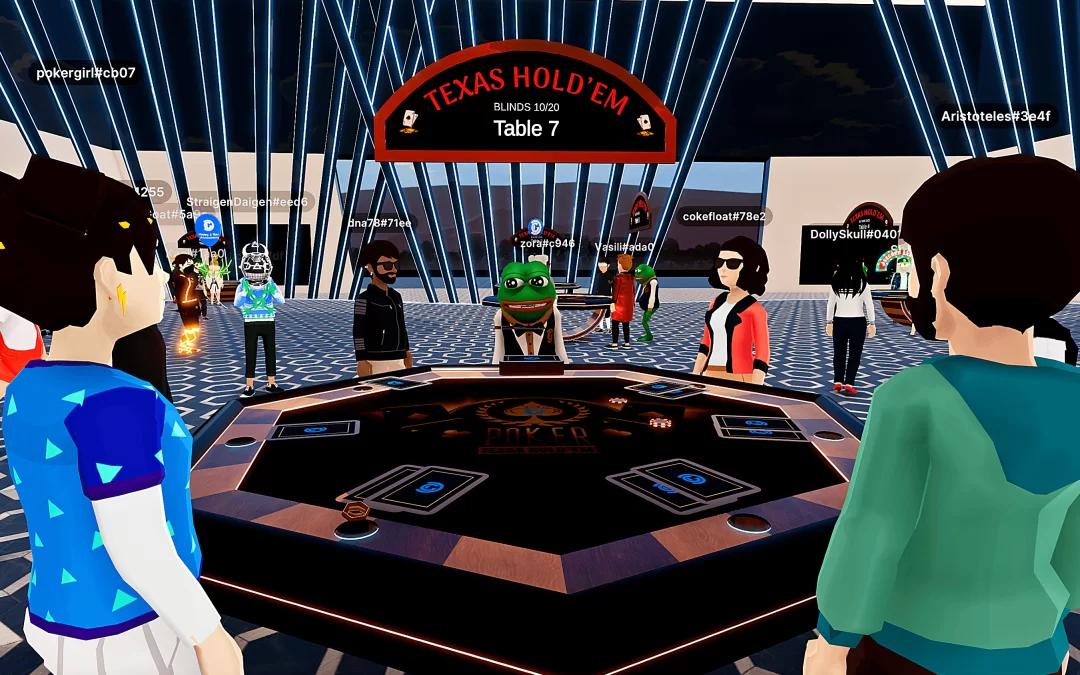In a metaverse often criticized for being devoid of things to do, the poker tables in Decentraland’s ICE Poker virtual casino have never been busier.
The play-to-earn poker platform from Decentral Games is host to around 6,000 unique players each day, which makes up more than 30% of Decentraland’s daily users. In the past three months, the game has generated more than $7.5 million in revenue through its various income streams, according to Decentral Games founder Miles Anthony.
“At any given time, we have over 1,000 players playing poker,” Anthony told CoinDesk in an interview. “It doesn’t sound like a lot of users, but when it comes to the open metaverse, it’s pretty substantial considering the main issue right now with metaverses is that they’re empty.”
For as much press as “Web 3” is garnering, it’s important to remember the numbers are still small. The number of wallets (the pseudonymous, but not exactly precise, measure of actual humans interacting with Ethereum-based smart contracts) touching OpenSea on a daily basis is just 50,000, according to DappRadar. The non-fungible token (NFT) marketplace was recently valued at $13.3 billion in a recent funding round.
Read more: This Casino in Decentraland Is Hiring (for Real)
Decentral Games bet big on the metaverse a year and a half ago when it started acquiring virtual land in Decentraland. The DAO says it’s accumulated more than 1,000 of the game’s parcels to date. That effort was backed in part by an investment from Decentraland itself back in September of last year.
The success of Decentral Games’ ICE Poker should come as no surprise to anyone familiar with online gambling platforms, which have been a hit among virtual communities for decades.
Anthony says the platform sees itself as the genre’s Web 3 iteration, requiring users to purchase one of its NFT wearables before being able to play with house chips, as well as issuing two separate tokens – ICE and DG – to support its ecosystem.
The wearables, sold in drops on the platform in limited supply, already fetch high prices on secondary marketplaces like OpenSea, holding onto a floor price of 2.46 ETH (around $6,500) at the time of writing.
With a high-priced point of entry, guilds have become a core aspect of the game’s ecosystem, Anthony said. He says the game has intentionally avoided relying on mega guilds like YGG for accessibility. Gaming guilds typically rent out key crypto assets for a share of future profits from retail users.
“To be 100% honest, I actually think large guilds are really detrimental to game economies,” Anthony told CoinDesk. “Obviously the valuations for [guilds] have been pretty wild. And it can be great for even the short term, but I think a lot of these deals kind of overlook long-term effects.”
Read more: Crypto VCs Are Making a Big Bet on Gaming Guilds. Why?
Anthony says the platform solves this problem with a built-in delegation system, where players can loan an NFT wearable to another user in exchange for a 60-40 share of any revenue earned with it. Users who delegate just a single NFT make up the majority of the platform’s lenders.
Wen users?
Despite the enormous hype around the future of the metaverse in recent months, few poker platforms have been able to successfully enter the space, in part due to regulation.
Virtue Gaming became the first play-to-earn poker platform with a Malta Gaming Authority license in December, though its platform differs from ICE Poker’s in that it makes money off traditional casino mechanics rather than tokenization.
Anthony said Decentral Games is also preparing to launch a mobile iteration of ICE Poker in the coming months.














